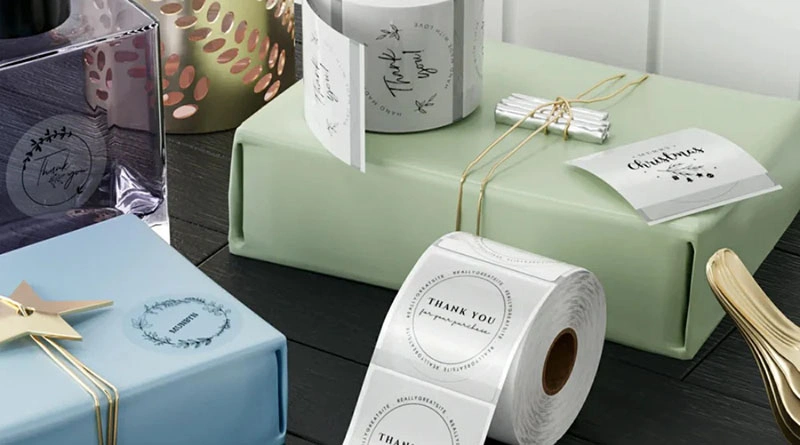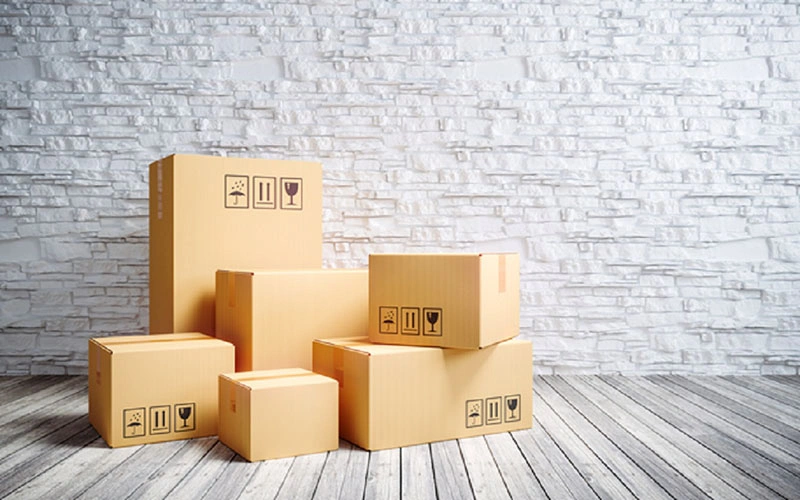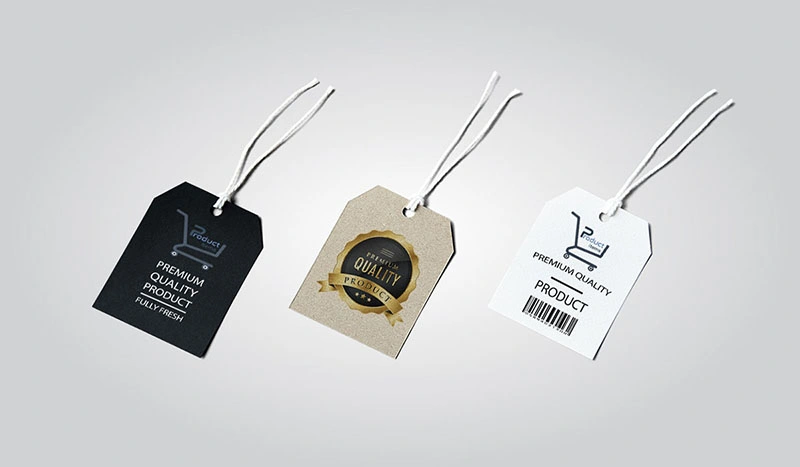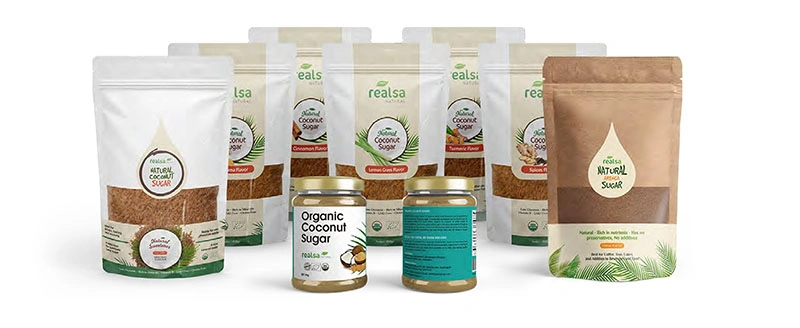Nowadays, packaging and labeling are no longer just boxes; they are an essential part of your branding. Large companies employ packaging design managers, who meticulously design packaging and labels for every product. To help startups and small brands navigate these challenges, this article will help you understand the core concepts of packaging and labeling, eliminating any unnecessary hassles.
Last updated: August 2025 | Estimated reading time: 8 minutes

This article will answer your questions:
- What is the difference between packaging and labeling?
- Why are they so important for branding and exporting?
- What are the common packaging types and applicable products?
- What are the commonly used packaging and labeling materials?
- How to customize packaging and labels for your business?
- How to avoid common mistakes?
What is the difference between packaging and labeling?
Packaging is an important component to protect the product, and labels are the language that describes the product.
Packaging is the outer packaging and inner packaging we all know, which is used to protect the product and facilitate transportation and storage. It is divided into primary packaging that directly contacts the product and secondary packaging (outer packaging).
Labels are information carriers attached or printed on packaging, used to describe product ingredients, efficacy, production units and brand information, etc.
You can think of packaging as a system:
- Outer box: used for transportation, to prevent extrusion and shaking, and protect the product
- Inner support: used to fix the product position
- Appearance design: affects the first impression when unboxing
- Size design: The size should be compact, not too tight or too loose
- Label information: helps you to clear customs quickly
Many new merchants only focus on the “outer box”, which results in returns and customer complaints due to incorrect sizes and labels.
Packaging ≠ a box

Experienced product managers know that a packaging system encompasses materials, structure, transportation, branding, compliance requirements, dimensions, and many other aspects to ensure safe delivery to your customers.
Why are packaging and labeling important to branding?
Packaging ensures safe transportation of products, and labels ensure that products are properly placed on shelves.
Good packaging can increase the probability of opening the box and enhance customers’ willingness to buy. Labels, on the other hand, contain more details and are also important information for products listed on many platforms.
Tags = compliance + identity + communication

Labels are more than just stickers; they include:
- Regulatory compliance: such as EU CE certification, US FDA requirements, local language of the sales destination, etc.;
- Brand identification: logo, ingredients, instructions for use, etc. help customers quickly understand the product and increase trust;
- Marketing effect: High-quality labels are essentially the most direct advertising.
In order to save money, some merchants print their own labels, but as a result, the goods are detained because the information does not match and they are not allowed to sell, which causes more losses.
What are the common types of packaging?
Each industry has different packaging logic, don’t get confused.
| Industry | Core Requirement | Packaging Suggestions |
|---|---|---|
| Cosmetics | Appearance + Stability | Use inner trays to prevent shaking; outer box should be elegant and meet U.S. standards |
| Electronics | Shockproof + Anti-static | Recommended structures: EVA foam, honeycomb board, or layered cushioning |
| Food Products | Sealing + Shelf Life | Must meet food-grade standards with high sealing performance |
| Alcohol | Compression Resistance + Breakage Prevention | Use rigid cardboard to protect the bottle and neck area |
| Apparel | Display + Moisture Resistance | Transparent window boxes with desiccant are commonly used |
Wrong packaging type or size can cause shipping damage and increase the likelihood of returns.
What are the common packaging and labeling materials?
The material determines the strength, appearance, cost and compliance of the packaging.
| Material Type | Description | Recommended Use |
|---|---|---|
| Corrugated Cardboard | Strong and recyclable | Outer boxes, shipping packaging |
| Greyboard | Thick and rigid | Gift box inserts |
| Kraft Paper | Natural texture, moderate strength | E-commerce mailer boxes, eco-friendly packaging |
| Coated Paper | Smooth surface, print-friendly | Color boxes, display packaging |
| PET / PP Film | Waterproof and glossy | Food labels, cold chain labels |
The label material also needs to consider the use environment:
- Cold chain products should use waterproof glue + non-marking ink
- Outdoor labels need to be UV-resistant and anti-fading
- Export labels must be clearly scannable to facilitate customs clearance and meet the import requirements of the destination country
How to customize packaging and labels for your products?
It is not as simple as adding a LOGO. It requires unified planning combining packaging structure + printing + regulations.

Practical steps for beginners:
- Start with a small batch: Verify that the structure and size are appropriate
- Ask the factory to provide die-cutting drawings + 3D renderings: Preview the structure and effect on the computer
- Proofing before printing: To avoid color difference and material error, physical sample confirmation is the most reliable
- Confirm label compliance in advance: Confirm which certifications you need, such as CE, FDA, country of origin, etc.
- Pre-transportation testing: Drop/vibration testing can reduce the probability of damage during transportation
Many brands arrange large-volume orders for the first time without confirming samples, which may result in a whole container of goods being severely damaged upon arrival at the port.
New trends in packaging and labeling in 2025
Trends change every day, and staying up to date on the latest developments keeps you ahead of the curve.
A quick overview of the latest developments:
- Digital printing: Suitable for small batch and multi-style packaging orders
- Environmentally friendly materials: FSC paper, biodegradable plastics, and environmentally friendly inks are becoming the new standard
- Smart labels: QR codes enhance traceability, anti-counterfeiting, and facilitate after-sales tracking
- Online 3D preview: More and more customers use renderings instead of physical proofing
Market Insights:
Customers now prioritize aesthetics, environmental friendliness, and practicality. Meanwhile, exporting countries are increasingly stringent on label compliance. It’s time to prioritize packaging and labeling to establish your brand.
FAQs:
Do products made in China have to be labeled?
Required. Include country of origin identification, regulatory certification (such as CE) and product information.
Can I print the labels myself?
Yes, as long as the printer, label material and size meet the requirements of transportation and sales channels.
What are China’s regulations on export packaging?
China's export packaging must meet GB/T 36911-2018 and GB/T 19142-2016, as well as the standards of the importing country. It also needs to be marked with key parameters such as production date and product information.
Conclusion
- Packaging is no longer a simple box, but a system that affects logistics, brand building and customer experience.
- A label is not just a sticker; it determines whether you can pass customs and sell products, and is related to whether the product is compliant and legal. It is an important pass for product sales.
- Different products have different packaging logics. Each industry has different characteristics and different requirements for packaging. Don’t use food packaging to package cosmetics.
- Make samples before shipping to avoid major errors such as color difference and size discrepancy. Confirming samples before production is the safest practice.
What can you do next?
- Re-examine your packaging structure and size design, is it reasonable?
- Confirm with the factory whether the label is compliant, whether the code can be scanned, and whether it complies with the regulations of the importing country and sales area?
- If you have no experience, you can communicate with us at XiangGe Packaging to get the best advice and solutions.
Need structural diagrams, material recommendations, or compliant labeling?
👉 Contact XiangGe for one-on-one packaging advice.
About XiangGe Package
We have over 10 years of packaging export experience, serving clients across Europe, America, Japan, and Australia. We specialize in comprehensive packaging solutions that ensure structural safety, brand presentation, and compliance for export.
We provide comprehensive support from sample development to mass production, helping you save time, money, and avoid pitfalls.
Last updated: August 2025

